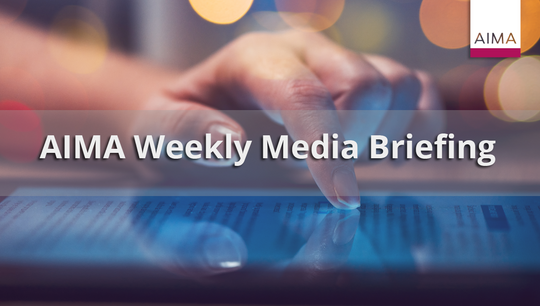The ISDA IBOR fallback protocols: An important but incomplete solution to IBOR transition for derivates
By William Winterton; Gregory Chartier; Miles Binney, Clifford Chance LLP
Published: 30 November 2020
On 23 October 2020, the International Swaps and Derivatives Association (ISDA) launched its IBOR Fallbacks Supplement and Protocol, marking another milestone in the transition from IBORs to risk free rates (RFRs). Relevant to alternative investment fund managers primarily in the context of markets documentation for OTC derivatives, repos and similar, the IBOR Fallbacks Supplement updates the 2006 ISDA Definitions to include new risk-free rate fallbacks for the five LIBOR rates together with eight other IBOR benchmarks.
The Supplement, when it becomes effective on 25 January 2021, will implement these risk-free rate fallbacks into the terms of new transactions which incorporate the Supplement. The Protocol will enable adhering parties to implement these fallbacks into the terms of legacy transactions. The broad scope of the amendments made by the Protocol, the range of agreements it covers and the availability of a series of templates and amendment agreements which can be used to tailor the terms of adherence, confront parties contemplating adherence with a series of challenges.
In this article we will focus on the key issues from the perspective of alternative investment fund managers in relation to adhering to the Protocol. A fuller explanation of the how the Protocol and Supplement work and the challenges they raise can be found in our recent briefing.
Scope
The first key issue is scope, as managers must be clear on what contracts are covered by the Protocol. Since it has been produced by ISDA, it would be easy to assume that the Protocol just covers standard ISDA documentation. However, unlike previous ISDA protocols, the scope of the Protocol has been extended to cover an extensive list of agreements including, for example, repurchase transactions documented under a Global Master Repurchase Agreement (GMRA).
Notwithstanding that the Protocol covers a broad range of documentation, one might nevertheless expect that it would only be relevant where the document incorporates the 2006 ISDA definitions or one of the equivalent earlier legacy ISDA definitions booklets. However, the Protocol will also amend documentation that references a relevant IBOR even where its use is not via an ISDA definitions booklet.
The fallback rates
Pursuant to the terms of the Protocol, if a permanent cessation trigger or (if applicable) a pre-cessation trigger occurs (and assuming linear interpolation is not possible) each of the IBORs will fall back to an adjusted RFR plus a spread adjustment. The adjusted RFR will be the relevant RFR for that IBOR (e.g., SONIA in respect of sterling LIBOR) compounded in arrears over an accrual period corresponding to the tenor of the IBOR (e.g., 1, 3, 6 months). The spread adjustment will be the historic median difference between the relevant IBOR and the RFR over a five-year lookback period.
Timing
The Protocol was launched by ISDA on 23 October 2020 and has an effective date of 25 January 2021. Already over 350 entities have signed-up. If two parties to an in-scope agreement both adhere to the Protocol prior to the effective date, then their in-scope agreements will be amended by the Protocol with effect from 25 January 2021. It is also possible to adhere to the Protocol after the effective date, in which case the amendments will be effective on the later date on which both parties to an in-scope agreement have effectively adhered to the Protocol.
It is important to be aware that 25 January 2021 will not be the day on which an IBOR is actually replaced by an adjusted RFR in respect of any transactions which are amended by the Protocol. Instead, all that will happen on this date is that fallback provisions will be added to the terms of the transaction which provide for the replacement of the IBOR with an adjusted RFR with effect from such later date on which such IBOR is permanently discontinued or (in respect of the LIBOR rates only) becomes non-representative. This is expected to occur in respect of one or more IBORs or IBOR tenors after the end of 2021.
Not a complete solution
The Protocol is undoubtedly a milestone, reflecting the outcome of the industry consultation on replacing IBORs with RFRs and the consequential amendments required in order to prevent excessive value transfer between the parties or a time-consuming repapering process. However, in the context of derivatives trading with asset managers and other buy-side firms, it would be wrong to think that the ISDA Protocol solves all problems.
Reservations have been raised as to whether the ISDA methodology for determining the fallback works as well for non-linear products (such as options and swaptions) as it does for linear products. Similarly, for managers representing clients with a liability driven investment policy, concerns have been raised about the potential pricing implications on the long-dated swaps which will be used in those strategies. This has even led some managers to trade out of their IBOR positions and into RFR based transactions in order to proactively manage their IBOR exposure. Alternatively, some managers are looking for a more bespoke solution than the ISDA Protocol. Managers should diligence their derivatives portfolio ahead of adherence to determine whether their portfolio is appropriate for the ISDA Protocol or whether an alternative or more bespoke solution is required.
Special mention should also be made of linked products. The term “linked product” describes a situation where two products have been sold together, for example a secured interest rate hedge in respect of a loan. The development of market conventions for cash products lags the derivatives market and could follow different methodologies and conventions going forward. In addition, consideration needs to be given to the difference between a hedge and the cash product it supports, in terms of the commercial effect and timing of fallbacks taking effect, as the more differences there are, the less effective the hedge becomes. Again, this is a key due diligence point.
The broader context
Beyond documentation, it is also vital to consider the broader impact of IBOR transition on a manager’s operations. Issues such as upgrading internal systems and analysing the systems of third-party service providers can be harder to identify and solve. Regulators globally are also testing operational resilience of businesses; this comes in the form of an increased level of scrutiny and an assessment on the level of reliance on working with third-party vendors.
Amidst COVID-19, Brexit and the US elections, IBOR transition is probably not the number one focus for alternative investment fund managers at this this point. However, managers should be realistic about the quantity of work that will be involved in identifying where bilateral legal and commercial efforts are going to be required. The complexity around this topic means teams will need a broad range of support in order to have effective conversations with counterparties and clients.









